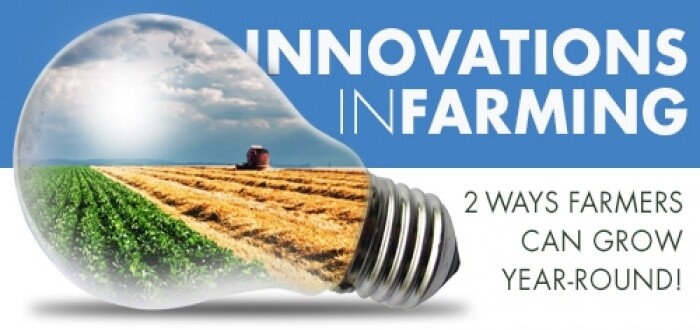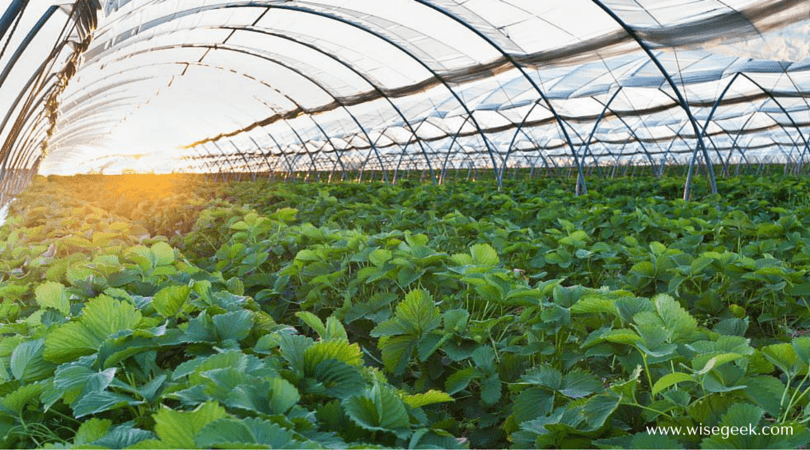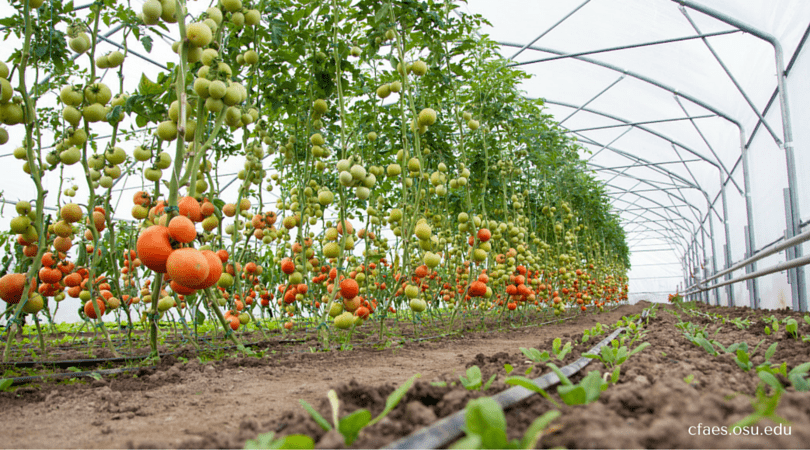
We all know that Mother Nature can be a beast at times. Between changes in climate and crazy weather patterns, she can become the farming industry's enemy as quickly as she was once its ally. And don't even get us started about the (although sometimes kind of cute) animals that like to eat the growing produce! Fortunately, innovations in farming are helping to break down these barriers, providing farmers with new ways to grow their crops at times they may not have always been able to. No longer are the days of closing up shop during the off-season, and you can say goodbye to the idea of farmers only expanding their row crops outward. They're beginning to expand upward, as well, and luckily for us food-lovers, they're providing tasty produce of the highest quality year-round.
Greenhouses
 Can you believe that greenhouses actually date back to Roman times? Even all those years ago this advancement completely revolutionized growing, and the long-standing history can be a testament to the greenhouse methodпї1/2s importance in the industry. One of the biggest advantages to date? They allow farmers to evade Mother Natureпї1/2s sassy sisters, Blustery Wind and Frigid Winter, providing an extended growing season and flexibility for farmers to grow whatever they want, whenever they want.
Can you believe that greenhouses actually date back to Roman times? Even all those years ago this advancement completely revolutionized growing, and the long-standing history can be a testament to the greenhouse methodпї1/2s importance in the industry. One of the biggest advantages to date? They allow farmers to evade Mother Natureпї1/2s sassy sisters, Blustery Wind and Frigid Winter, providing an extended growing season and flexibility for farmers to grow whatever they want, whenever they want. 
How they work:
Greenhouses provide a controlled environment and when we say controlled, we mean on just about every level (water, temperature, light, etc.). Usually made of glass or other transparent material(s), they take in and optimize natural light and use solar radiation to trap heat. Many greenhouses also use hydro technology systems, which allow farmers to reuse (and clean) water from the floor and/or outside safely. To add to the list of benefits, they also decrease the need for pesticides and herbicides, and they keep out those troublesome insects and animals. Year-round growing, no pests, reusable energy пї1/2 it's no surprise they've been around so long! If you think this development was revolutionary, just wait until you hear what's in store for the greenhouses of the future. Spoiler alert they are underwater.
Vertical Farms
Vertical farms also provide an optimal and controlled environment for farmers. Actually, though they haven 1/2t been around as long, they are quite similar to greenhouses. They protect crops from inclement weather, allow for an extended growing season, and keep out pests. Contrarily to greenhouses, though, vertical farms are often found in old warehouses or other large structures in cities and urban areas. Also, growing vertically in stacked layers provides farmers with nearly eight times the growing space. They can be a few floors high or several 1/2 the sky is the limit!How they work:
Vertical farms are usually fully enclosed and pretty high-tech. They often utilize hydroponic, aeroponic and/or aquaponic growing techniques. Whoa пї1/2 that was a lot of big and probably unfamiliar words we just threw at you, right? Let us break it down a bit:- The hydroponic method uses nutrient solutions (in water) to grow crops and then essential minerals to sustain that growth. No soil is used.
- The aeroponic method uses air and mist to transmit nutrients. No soil is used.
- The aquaponic method combines aquaculture (fish, snails, prawns and other small aquatic animals and their waste) with hydroponics to cultivate. No soil is used.



This paragraph will help the internet users for creating new blog or even a weblog from start to end.
Paul Brown